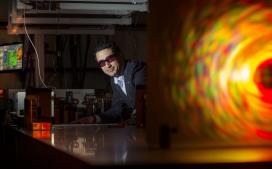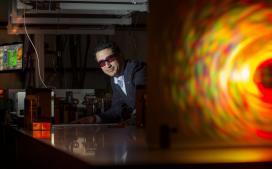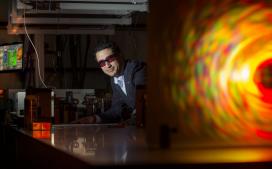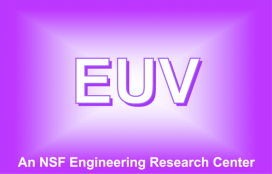EUV ERC Native American REU Student Becomes Academic Research Leader
Franklin Dollar, a member of the Dry Creek Band of Pomo Indians in California, was a 2012 Research Experiences for Undergraduates (REU) student at the NSF’s now-graduated Extreme Ultraviolet Engineering Research Center (EUV ERC), based at Colorado State University. Now, as a faculty member at the University of California at Irvine (UCI), he is one of the faculty participant enablers in NSF’s newly formed STROBE Science and Technology Center (STC).
Franklin Dollar grew up on a small Pomo reservation near Geyserville, California, with no running water, no electricity and no internet access. Today, Dr. Dollar is an assistant professor of physics & astronomy at UCI and head of a lab studying ultra-high-intensity plasma physics. Joining UCI’s Department of Physics and Astronomy in the fall of 2015, Dr. Dollar is only the second Native American physics professor in the top 50 U.S. schools.
An excellent high school science teacher sparked Franklin’s interest in science and led to his being accepted to UC Berkeley, where he majored in engineering physics. As an undergraduate student at Berkeley, Franklin worked closely with the Berkeley node of the EUV ERC, conducting research at the Lawrence Berkeley National Laboratory. His first paper as an undergrad acknowledged the EUV ERC.
After earning a Ph.D. in applied physics at the University of Michigan in 2012, Dollar became a postdoctoral scholar and research associate at CU’s JILA institute, working with EUV ERC faculty members Margaret Murnane and Henry Kapteyn, who mentored him. There, he investigated X-ray source production with high-intensity lasers, a pursuit he has continued in his own lab at UCI. Murnane and Kapteyn also involved him with the design of the STROBE pathways program for Native American STEM students at Fort Lewis College in Durango, Colorado.
Dollar also participated in drafting a proposal to procure NSF support for a new STC to explore how imaging modalities such as X-ray, optical, and electron microscopy can be improved and combined to help answer some of the most complex and challenging questions in medicine, chemistry, physics and other areas of science. The effort was successful; in fall 2016 the NSF announced a five-year grant of $24 million to fund the Science & Technology Center on Real-Time Functional Imaging (STROBE), with UCI as one of its nodes and Dollar as head of the work at UCI.
In addition to its research, the center is designed to produce more scientist/engineers like Franklin Dollar. “Our mission is student success, and that comes in the form of increasing representation everywhere optical science exists,” he says. “I benefited tremendously from all the groups and programs that were there for me during my education,” Dollar says. “Now we have an opportunity to put even more pieces of the puzzle together for other underserved students. I’m glad to be a part of that.”






